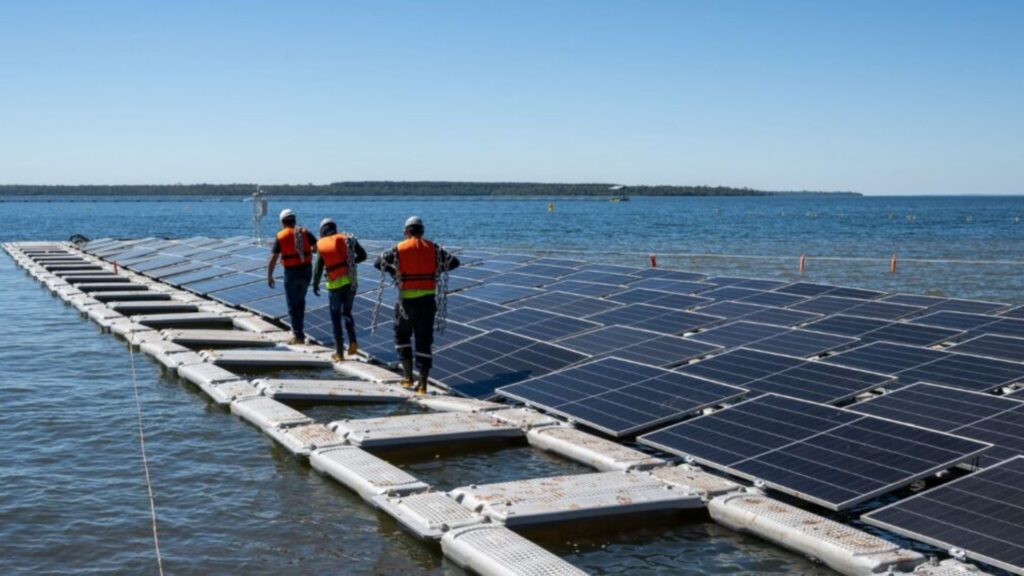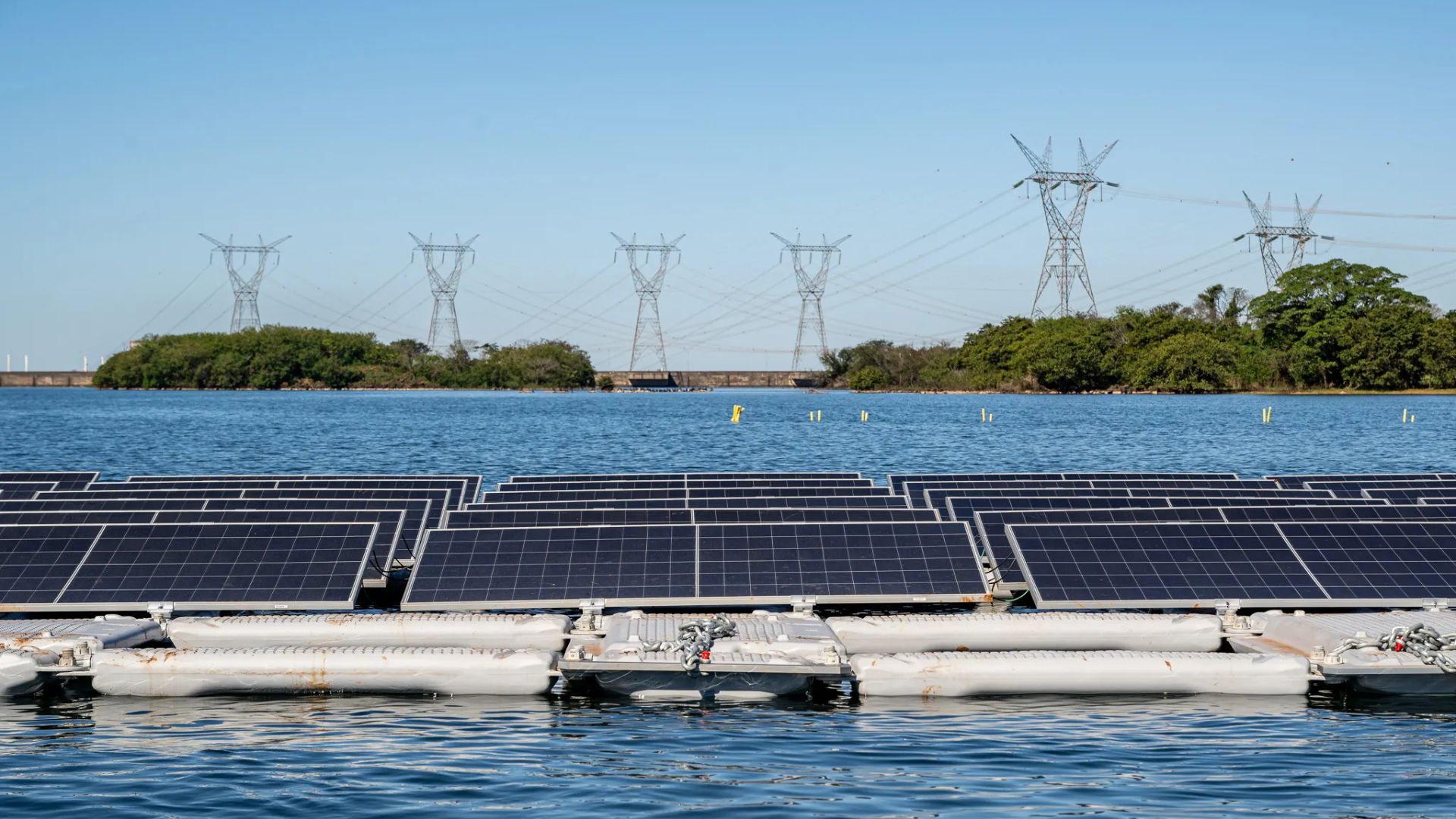
Itaipu Binacional has commenced installation of the first photovoltaic panels for its pilot 1 MWp floating solar power plant on the hydroelectric reservoir. The initial array of 132 bifacial solar modules was assembled this week on the Paraguayan side of the reservoir, marking a major milestone in diversifying the world’s largest hydroelectric generator’s energy mix (UOL Economia). Over the next two weeks, nine additional panel sets—totaling 1,584 modules—will be installed, with full capacity operations expected later this year.
The floating plant will occupy approximately 10 000 m² of water surface, representing less than 1% of Itaipu’s reservoir, yet generate enough electricity to power roughly 650 homes. All output will feed directly into the facility’s internal grid via a substation on the Paraguayan shore, enabling Itaipu to compare floating and ground-mounted solar generation under identical operating conditions.
Technical Characteristics of the Project
The floating system employs 705 Wp bifacial modules mounted on 4 199 specialized floats, designed to withstand wind, waves, and UV exposure over a 30-year lifespan. The modules’ bifacial nature allows energy capture from reflected light on both glass surfaces, boosting overall yield compared to conventional single-sided panels (Radio Cultura Foz).
Construction and supply were secured by a binational consortium of Sunlution (Brazil) and Luxacril (Paraguay) at a bid price of US $854 500, representing an 11.7% discount from the project’s original estimate. All equipment meets international quality standards, ensuring reliable performance and minimal maintenance across diverse weather conditions.
Expansion Potential
Itaipu’s Superintendent of Renewable Energies, Rogério Meneghetti, emphasized that this experimental facility will inform decisions on larger-scale deployments. “By comparing floating and terrestrial solar generation and assessing grid integration challenges, we’ll gain critical insights for future expansion,” he said (Times Brasil).
In a theoretical scenario where 10% of the reservoir surface is covered with floating panels, Itaipu could generate up to 14 000 MW, matching its existing hydroelectric capacity. While acknowledging this as a conceptual figure, Meneghetti noted it underscores the strategic value floating solar could add to the company’s clean-energy portfolio.
Brazilian General Director Enio Verri highlighted the project’s role in Itaipu’s broader innovation agenda, which includes green hydrogen and biogas initiatives. “This floating solar plant demonstrates our commitment to testing emerging technologies that complement our core hydroelectric mission without disrupting reliable power supply,” he explained (Inove Energias).











